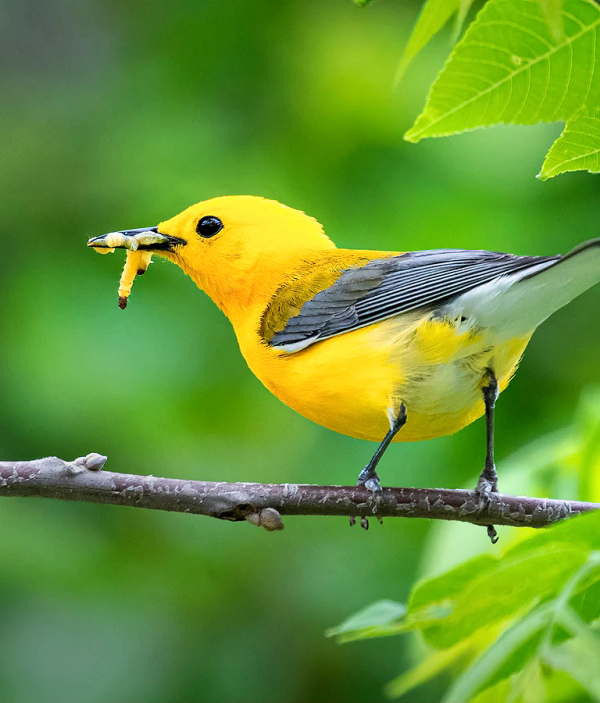
A variety of birds and their associations with bottomland forest habitats are being studied by Audubon and its partners along the Upper Mississippi River (Prothonotary Warbler photo by Raymond Dake).
|
Bottomland forests along the Upper Mississippi River provide important resources for a variety of nesting, migrating, and wintering bird species throughout the year. While these forests are some of the largest intact woodlands in the region, managing these forests for the future and for the benefit of associated wildlife is crucial to keeping this ecosystem productive for birds and people. Ongoing bird community surveys help us to understand habitat associations that inform and influence habitat management in the Upper Mississippi River Valley.
Audubon, especially Audubon Upper Mississippi River, is working with staff from the US Army Corps of Engineers, US Fish & Wildlife Service, US Geological Survey, Tribal Communities, state agencies, and universities to understand bird species associations interactions and within bottomland forests from St. Paul, Minnesota to St. Louis, Missouri. Bottomland forest bird surveys have been conducted at a variety of conservation areas and islands along the Mississippi and lower Illinois Rivers for more than a decade as a way to understand how birds are responding to riparian management along the Mississippi River.
The annual bird surveys help partners and the public understand the dynamics of the bird communities across this region and what features are the most important for different bottomland bird species. By conducting species density estimates, monitoring population trends over time, identifying areas in the region that are the most productive for birds (spatial priorities), and describing what characteristics comprise these forest communities (such as canopy cover, trees per acre, and others), researchers inform and influence management of this crucial habitat for birds and other wildlife with respect for the public’s interests.
Partners plan to continue to conduct the present surveys and expand into areas where there are information gaps to inform the best forest management practices that benefit birds through sound science and conservation actions. This information was provided in the online Audubon publication: Bird Monitoring & Science Along the Upper Mississippi River | Audubon. To learn more about the expansive research conducted and ongoing conservation interests and efforts, you can refer to the publication “Upper Mississippi River Bottomland Forest Avian Stewardship Plan” at avianstewardship_2020revision.pdf (audubon.org)